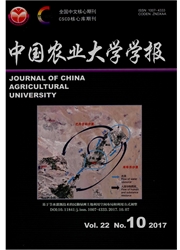

 中文摘要:
中文摘要:
以新疆野生樱桃李(Prunus sogdiana Vassilcz.)扦插苗为试材,接种南方根结线虫(Meloidogyne incognita)鉴定其抗性,并对抗病机理进行初步分析。结果显示:新疆野生樱桃李抗病植株发生过敏性(HR)反应,在接种后1d根系就出现典型的HR反应,并且在线虫周围细胞中发生HR反应的比例始终高于感病植株。在抗性植株发生HR反应的同时其体内大量产生过氧化氢,尤其在接种后1~2d过氧化氢和超氧阴离子的积累快速增加,这与HR反应特征基本一致。在接种南方根结线虫后,抗病植株中的VAD1和PO2表达均高于感病植株,说明新疆野生樱桃李抗南方根结线虫的机制在于侵染后首先引起过氧化氢和超氧阴离子的上升,进而产生HR反应限制了巨细胞的发育,使线虫得不到足够的营养而发育受阻,导致不能形成根结。同时VAD1和PO2基因表达上调可能启动抗病反应,从而使植株产生抗性。
 英文摘要:
英文摘要:
Resistance evaluation and preliminary analysis on the mechanism of resistance of Xinjiang wild Myrobalan plum to Meloidogyne incognita were conducted through artificial inoculation.The results showed that:Hypersensitive response(HR)was induced after inoculation.The resistant cultivar displayed typical HR response to nematode penetration at early infection period(1d).And the proportion of HR in nematode surrounding cells was always higher than in susceptible plants;HR was closely associated with an oxidative burst in infected tissue.Especially after inoculation for 1-2d,accumulation of reactive oxygen species rapidly increased,which was consistent with the HR response characteristics;Finally,the expression levels of HR-related genes PO2 and VAD1 in resistant varieties were always higher than susceptible ones after inoculation.In conclusion,the mechanism of Xinjiang wild Myrobalan plum's resistance to nematode is,started with oxidative burst occurred,then HR limits giant cell development,so that nematodes cannot get enough nutrition from feeding cells and stop development,resulting in failure in the formation of root knot.At the same time up-regulated gene expression of VAD1 and PO2 may trigger plant resistance response.
 同期刊论文项目
同期刊论文项目
 同项目期刊论文
同项目期刊论文
 期刊信息
期刊信息
